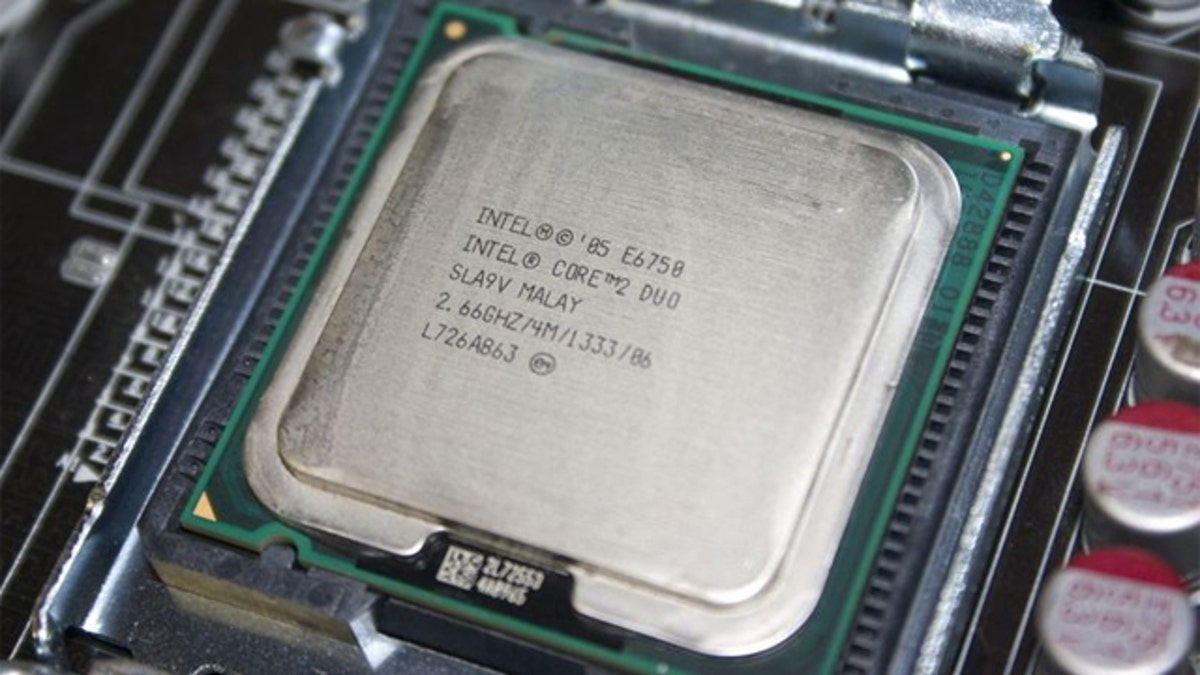
New technology developed by Intel means we could see 500x the amount of cores found on this dual-core Core 2 Duo processor. (Wikipedia)
When it comes to computers, faster is better, isn't it? Yes ... to a point.
Having hit a limit on the sheer speed of computer processors in recent years, chip manufacturers now meld the brains of multiple processors (called cores) into each individual chip, gaining power through their collective ability. Now researchers from Intel have announced a giant leap in computing power that could bring 1,000-core processors to consumers -- an enormous jump forward from the four or eight cores in today's fastest PCs.
At the Supercomputing 2010 conference in New Orleans, Intel researcher Timothy Mattson showed off a demonstration 48-core processor (he labeled it a Single-Chip Cloud Computer), and he enthused that it could easily be scaled up more than 20 times.
"This is an architecture that could, in principle, scale to 1,000 cores," Mattson told the crowds. "I can just keep adding, adding, adding cores." But would a consumer automatically experience a vast boost in computing power from this superchip? Not really, said Rich Brown, a desktop computer analyst with CNET.
“A consumer would see no practical benefit today from a 1,000-core CPU," Brown told FoxNews.com. "But it's not inconceivable that that might change. To take advantage of that much simultaneous processing, a program would have to be written to support it."
Brown said that while Windows 7 does theoretically support as many as 256 cores, most modern software and games -- such as Adobe’s Creative Suite, Microsoft Office 2010, and new PC games -- typically support only four to eight cores. The jump to 1,000 cores would actually present more of a challenge for developers than a boost in speed.
"Moving up to 1,000 cores will require a fairly radical rethinking of how software is designed," PCMag.com analyst Matthew Murray told FoxNews.com. "I imagine the industry won't get there until those CPUs are already out, about, and crunching numbers," he said.
"Right now a lot of software can't work with that many cores -- a lot of it can't even take advantage of six cores," Murray noted.
So why the push to add processing power that modern computers simply aren't designed to handle? A few years ago, leading processor makers Intel and AMD realized that boosting the sheer speed of individual CPUs beyond 4 gigahertz or so was becoming physically impossible, explained Cisco Cheng, PCMag.com's lead laptop analyst. To run at those tremendous speeds, the chips spat out simply too much heat, and cooling them was a serious problem.
"The solution to the gigahertz bottleneck was to cram extra physical cores into a single chip," he explained. And speed takes a backseat in modern chips as the total number of cores doubles and quadruples. "Four- to eight-core systems tend to have tuned-down speeds," Cheng told FoxNews.com. "Instead of the 3- to 4-GHz single-core processors of the past, it’s common to see each core (in a quad-core setup) run at about half that speed."
Intel nevertheless stresses that it will continue to move away from pure processing speed as a measure of power in favor of sheer number of cores. And all the experts agree that software will eventually be written to take advantage of their power -- eventually.
But don't worry, your buying decision won't be complicated by these advancements for the next few years: Computers with 1,000 processing engines won't be mainstream for at least a decade, Brown said.
"If you follow Moore's Law, where CPU power per dollar doubles every 18 months, and you use quad-core CPUs as your starting point, you're looking at about 12 years before a 1,000-core CPU would be as affordable as a quad-core CPU today."
And until the entire operating system is rewritten to work with that class of chip -- well, you're probably stuck with Farmville running at today's speeds for the next few years. But your garden should still grow just fine, right?
